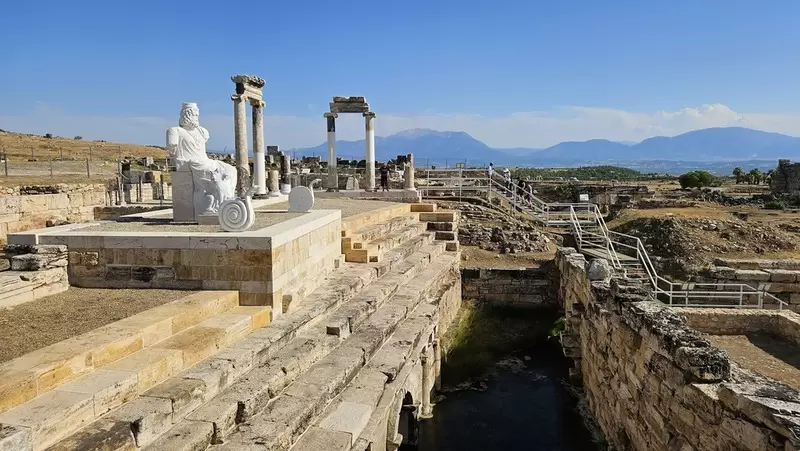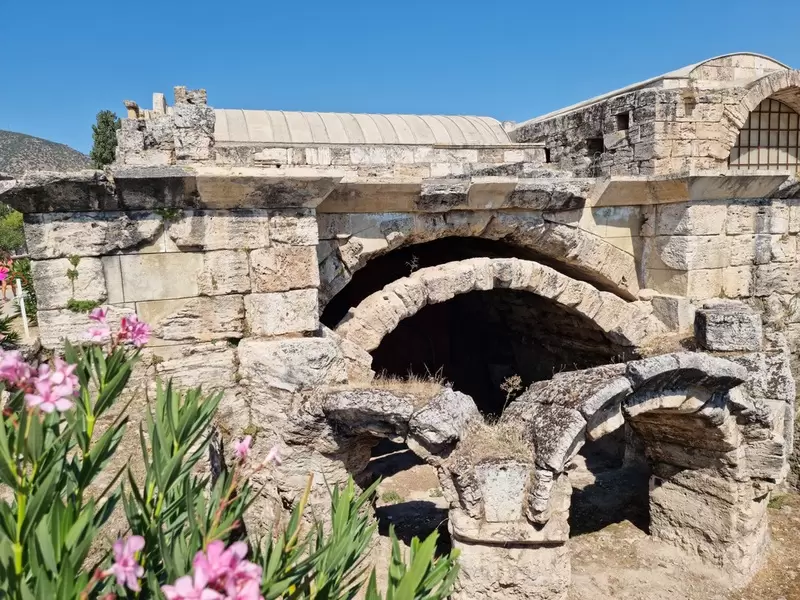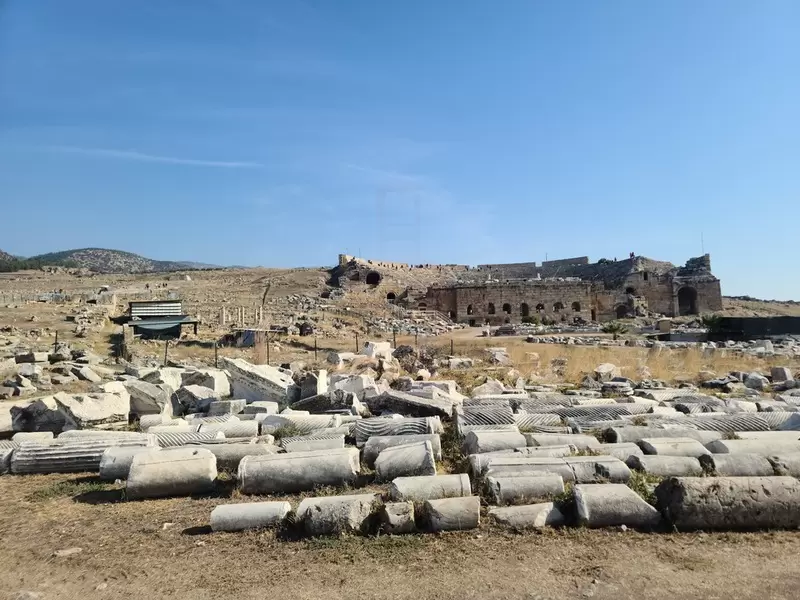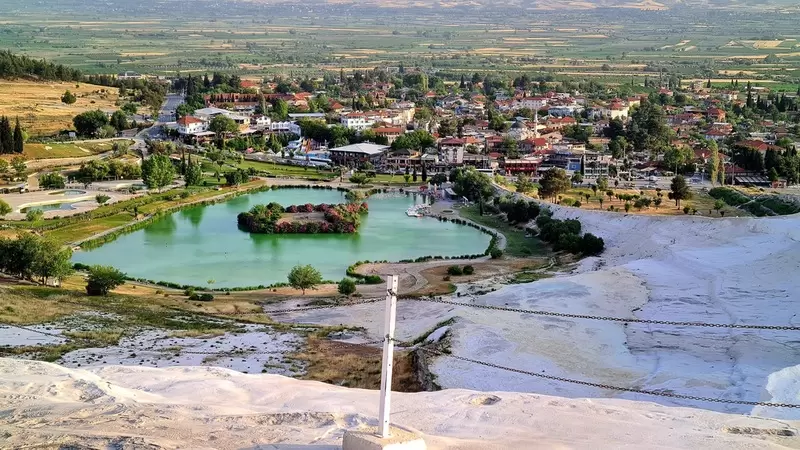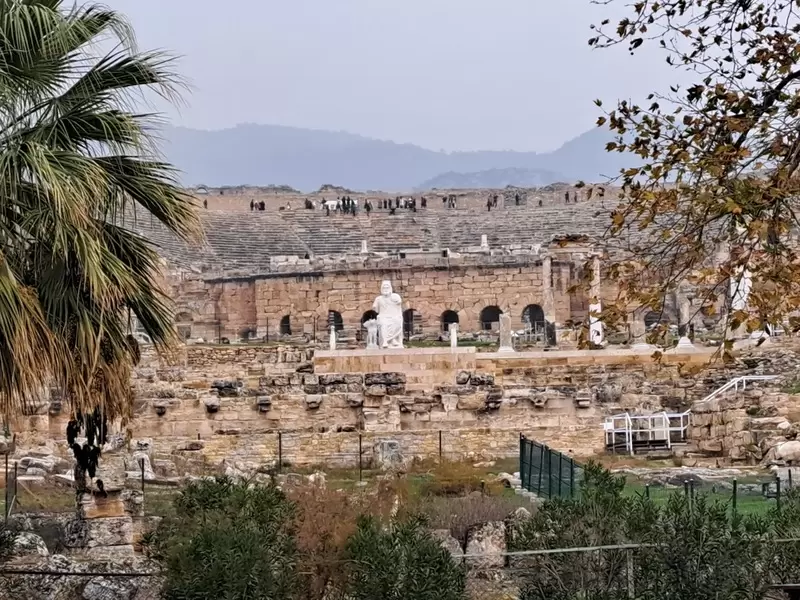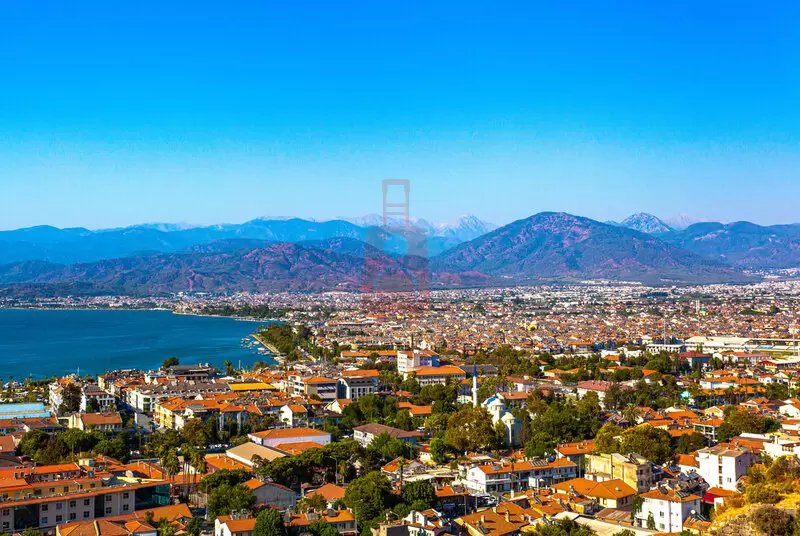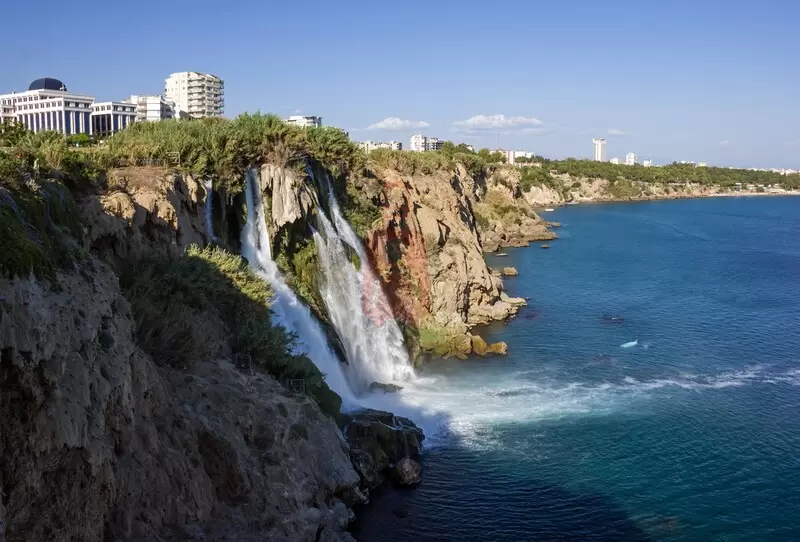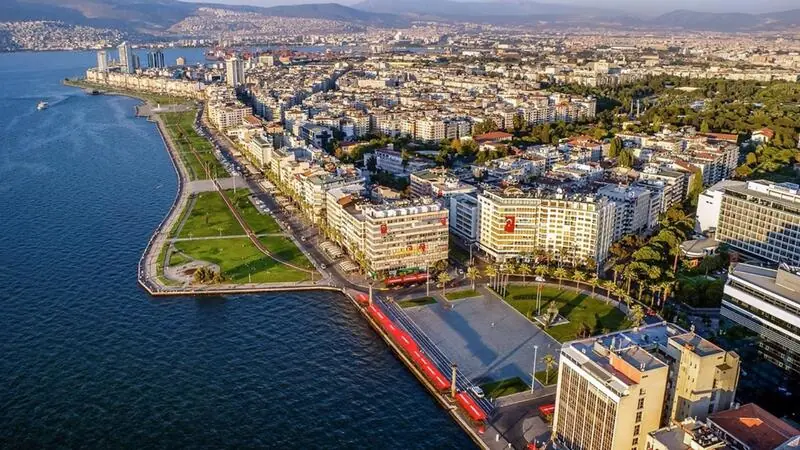
Welcome to Hierapolis Ancient City! Situated in southwestern Turkey, near the modern-day city of Pamukkale, Hierapolis is a captivating archaeological site known for its well-preserved ruins, ancient theater, and natural hot springs. With a rich history that spans several civilizations, Hierapolis offers visitors a unique blend of cultural heritage and natural wonders. This UNESCO World Heritage Site offers a unique combination of
well-preserved ancient ruins and stunning terraces of travertine
cascading pools.
Historical Background:
Founded in the 2nd century BCE, Hierapolis flourished as a Hellenistic
and Roman city. It was strategically positioned along trade routes and
attracted settlers from various cultures. The city's name translates to
Sacred City, indicating its religious significance in the ancient
world. Hierapolis dates back to the Hellenistic period and was founded as a thermal spa city. Over the centuries, it flourished under the rule of various civilizations, including the Greeks, Romans, and Byzantines. The city's strategic location along trade routes contributed to its growth and cultural significance.
Archaeological Discoveries:
Hierapolis boasts an array of archaeological treasures that provide
insights into its vibrant past. The well-preserved ruins showcase the
city's architectural grandeur and cultural heritage.
The most iconic feature of Hierapolis is its travertine terraces, known as Pamukkale, which were formed by the natural mineral-rich hot springs that flow through the area. The terraces create a stunning white landscape, resembling cotton or snow, making it a truly mesmerizing sight.
The ancient theater of Hierapolis is one of the city's major highlights. This well-preserved Roman theater once accommodated approximately 15,000 spectators and hosted various performances and cultural events. Today, visitors can still witness the grandeur of the theater and even attend modern theatrical performances held there.
The Necropolis of Hierapolis, a vast ancient cemetery, is another remarkable sight. Elaborate tombs and sarcophagi line the streets, showcasing the city's funerary practices and reflecting the diverse cultures that resided in Hierapolis.
The Plutonium, a sacred cave associated with the Greek god Pluto, is an intriguing site within Hierapolis. It was believed to be an entrance to the underworld and was revered for its mysterious gas emissions, which were considered to have spiritual significance.
Archaeological Highlights:
Exploring Hierapolis Ancient City reveals a wealth of archaeological treasures. Some of the notable highlights include:
1. Theater: The ancient theater of Hierapolis is a remarkable structure that once hosted theatrical performances and events. With its well-preserved seating area and stage, it offers visitors a glimpse into the entertainment and cultural life of the city. The theater also provides panoramic views of the surrounding landscape.
2. Necropolis: Hierapolis is renowned for its extensive necropolis, which is one of the largest ancient cemeteries in Anatolia. The necropolis features a vast collection of tombs, sarcophagi, and funerary monuments. Among the notable tombs is the Tomb of Philip the Apostle, an important Christian pilgrimage site.
3. Plutonium and Hierapolis Sacred Pool: Hierapolis was renowned for its hot springs, which were believed to have healing properties. The Plutonium was an ancient cave dedicated to the god Pluto, where poisonous gases emerged from the ground. The Hierapolis Sacred Pool, fed by the thermal waters, was a popular destination for visitors seeking therapeutic baths.
Visiting Hierapolis Ancient City:
Visitors to Hierapolis have the opportunity to explore the fascinating
ancient ruins and experience the unique natural beauty of the Pamukkale
terraces.
Walking through the ancient city, you can marvel at the well-preserved theater, stroll along the ancient streets, and explore the ruins of public baths, temples, and various other structures. The archaeological site offers a glimpse into the daily life, architecture, and religious practices of the ancient inhabitants.
After exploring the ruins, you can indulge in the therapeutic waters of the Pamukkale terraces. The warm, mineral-rich waters flow down the cascading terraces, creating inviting pools for relaxation and rejuvenation. Visitors can wade through the travertine terraces and enjoy the breathtaking views of the surrounding landscape.
It is advisable to bring comfortable footwear, as you will be walking on uneven surfaces in the archaeological site. Additionally, remember to bring swimwear and towels if you plan to enjoy the Pamukkale pools.
Hierapolis also houses a fascinating museum that exhibits artifacts discovered in the region, including sculptures, inscriptions, and everyday objects. A visit to the museum can deepen your understanding of the city's history and further enrich your experience.
Hierapolis Ancient City offers a captivating journey through time, blending ancient ruins with natural beauty. Whether you are a history enthusiast, a nature lover, or simply seeking a unique travel experience, Hierapolis is a destination that promises to leave a lasting impression.
Visiting Tips:
- Hierapolis is located near the town of Pamukkale, famous for its travertine terraces. Consider combining your visit to Hierapolis with a trip to Pamukkale to experience both attractions.
- Wear comfortable shoes suitable for walking on uneven terrain, as the archaeological site covers a large area.
- Don't forget to bring your swimsuit if you wish to enjoy the thermal waters of the Hierapolis Sacred Pool. However, access to the pool may be subject to specific regulations and fees.
Nearby Attractions:
While visiting Hierapolis, you can also explore other attractions in the region:
- Pamukkale Travertine Terraces: Just a short distance from Hierapolis, the travertine terraces of Pamukkale are a natural wonder. These cascading mineral-rich pools, formed over thousands of years, create a stunning white landscape. Visitors can walk barefoot on the terraces and even bathe in the thermal waters.
- Laodicea: Located nearby, the ancient city of Laodicea is another significant archaeological site. It was an important center of commerce and religion in ancient times, and its ruins include a stadium, theater, and an impressive ancient water system.
In conclusion, a visit to Hierapolis Ancient City offers a captivating journey into the past. Wander through the well-preserved ruins, explore the ancient theater, and experience the therapeutic hot springs. Immerse yourself in the rich history and natural beauty of this remarkable site, and discover why Hierapolis remains a popular destination for history and nature enthusiasts alike.
Please note that archaeological sites are subject to ongoing research, restoration, and accessibility may vary. It's advisable to check for the latest information and guidelines from official sources before planning your visit to Hierapolis Ancient City.
